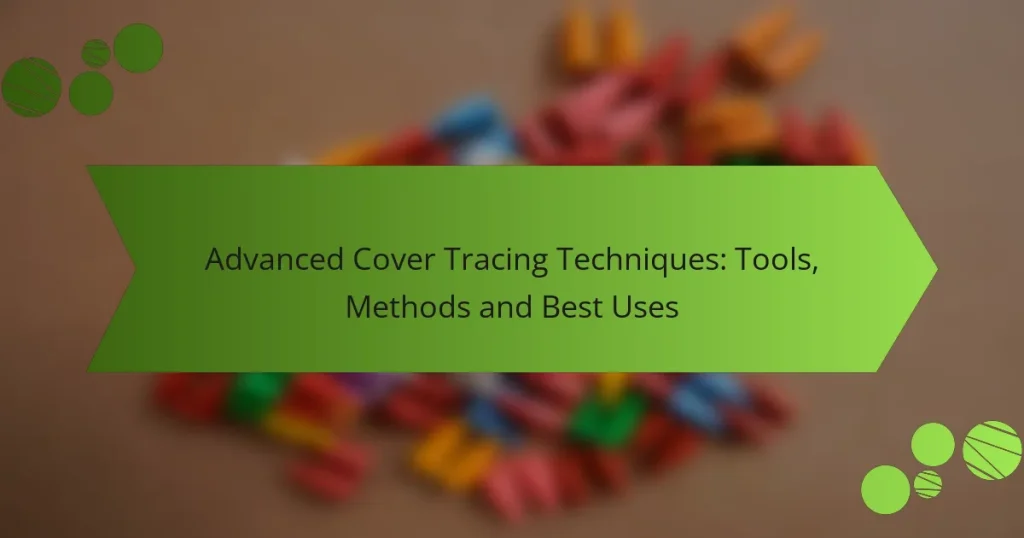Advanced cover tracing techniques are essential for achieving high-quality designs across various applications. By utilizing a combination of sophisticated methods and versatile tools, such as Adobe Illustrator and CorelDRAW, designers can enhance accuracy and efficiency in their projects. Selecting the appropriate tracing method is crucial, as it should align with the project’s complexity and the user’s skill level to ensure optimal results.
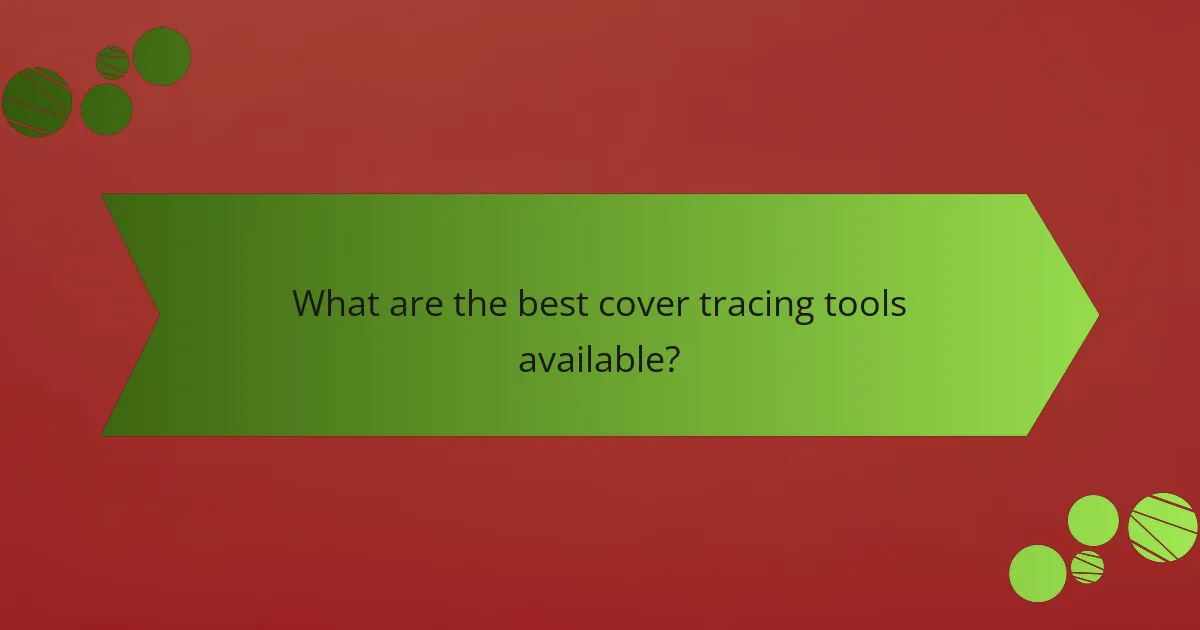
What are the best cover tracing tools available?
The best cover tracing tools combine functionality, ease of use, and versatility, catering to various design needs. Popular options include Adobe Illustrator, CorelDRAW, AutoCAD, Inkscape, and Sketch, each offering unique features suited for different types of projects.
Adobe Illustrator
Adobe Illustrator is a leading vector graphics editor widely used for cover tracing due to its robust features and precision. It allows users to create detailed vector paths and offers advanced tools like the Image Trace function, which converts raster images into editable vector graphics.
When using Illustrator, consider leveraging layers to organize your tracing work efficiently. The software supports various file formats, making it easy to export your designs for print or digital use. However, it requires a subscription, which may be a consideration for budget-conscious users.
CorelDRAW
CorelDRAW is another powerful vector graphic design software that excels in cover tracing. It features an intuitive interface and tools like PowerTRACE, which simplifies the conversion of bitmap images into vector graphics. This makes it suitable for both beginners and experienced designers.
CorelDRAW is often favored for its flexibility in handling different file types and its strong community support. Users should take advantage of its extensive library of templates and clipart to enhance their projects. Pricing options vary, including one-time purchases and subscription models.
AutoCAD
AutoCAD is primarily known for its drafting capabilities, but it can also be used for cover tracing, especially in technical and architectural designs. Its precision and ability to create detailed layouts make it ideal for professionals in engineering and construction.
When using AutoCAD for tracing, focus on its layering system to manage complex designs effectively. The software supports various export formats, ensuring compatibility with other design tools. However, its steep learning curve may pose challenges for new users.
Inkscape
Inkscape is a free, open-source vector graphics editor that provides a solid alternative for cover tracing. It includes features like the Trace Bitmap tool, which allows users to convert raster images into vector paths easily. This makes it accessible for those on a budget or just starting in design.
Inkscape supports a wide range of file formats and offers a user-friendly interface. However, users may encounter limitations in advanced features compared to paid software. Regular updates and a supportive community help enhance its functionality over time.
Sketch
Sketch is a design tool favored by web and mobile app designers, but it also offers capabilities for cover tracing. Its vector-based approach allows for precise design work, and it includes features like Symbols and Artboards to streamline the design process.
Sketch is particularly useful for collaborative projects, as it supports real-time feedback and sharing. However, it is only available for macOS, which may limit accessibility for some users. Consider using Sketch for projects that require rapid prototyping and iteration.
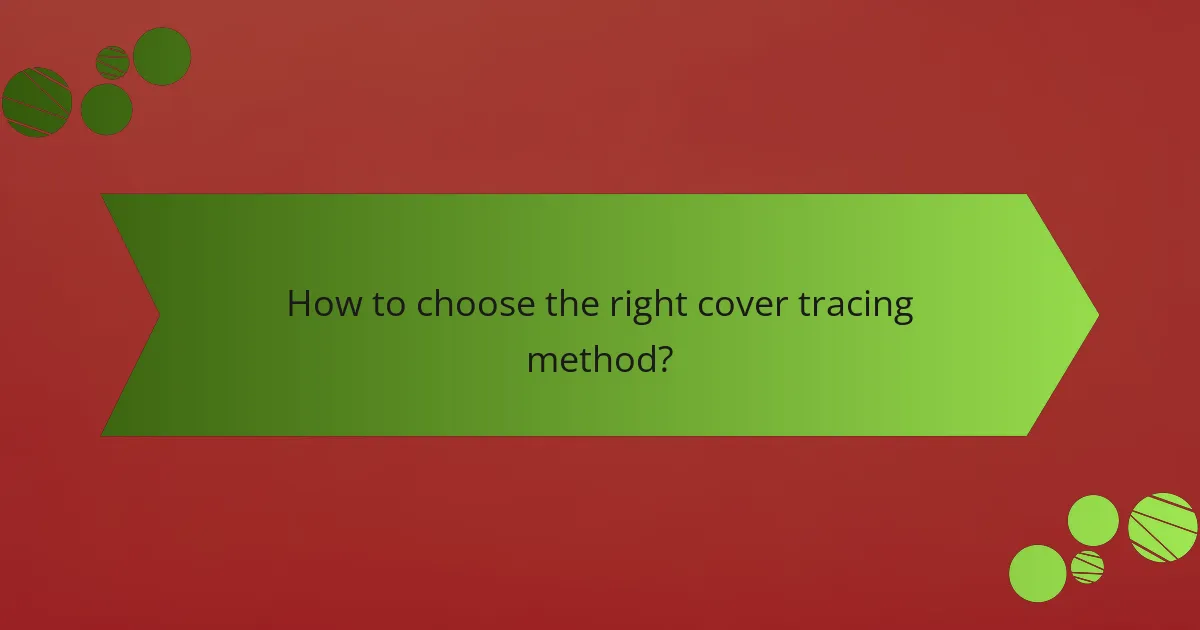
How to choose the right cover tracing method?
Choosing the right cover tracing method involves evaluating the specific needs of your project, including complexity, software compatibility, and the skill level of users. The ideal method should align with these factors to ensure efficiency and accuracy in the tracing process.
Consider project complexity
The complexity of your project significantly influences the choice of cover tracing method. For simpler projects, basic tools may suffice, while more intricate designs may require advanced techniques that offer greater precision and flexibility.
Evaluate the number of layers, the intricacy of shapes, and the overall design requirements. For example, a project with multiple overlapping elements may benefit from software that supports advanced vector tracing capabilities.
Evaluate software compatibility
Software compatibility is crucial when selecting a cover tracing method. Ensure that the chosen method integrates well with the design software you are using, whether it’s Adobe Illustrator, CorelDRAW, or other platforms.
Check for features like file format support and the ability to import/export designs seamlessly. Some tools may offer plugins or extensions that enhance functionality, making them more suitable for your specific needs.
Assess user skill level
User skill level plays a vital role in determining the appropriate cover tracing method. Beginners may find simpler, more intuitive tools easier to navigate, while experienced users might prefer advanced options that offer greater control and customization.
Consider providing training or resources for users who may struggle with more complex software. A method that matches the skill level of the team can lead to better results and increased productivity.
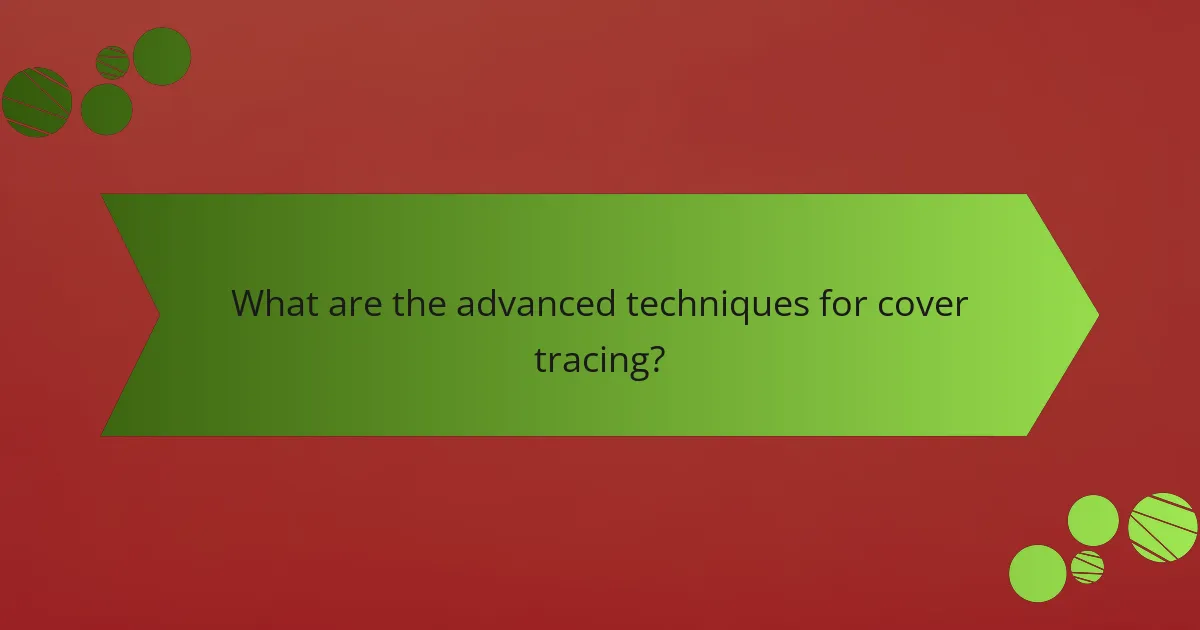
What are the advanced techniques for cover tracing?
Advanced cover tracing techniques involve sophisticated methods that enhance the accuracy and efficiency of tracing covers in various applications. These techniques include layering, vectorization, and image tracing algorithms, each offering unique advantages depending on the project’s requirements.
Layering techniques
Layering techniques involve stacking multiple images or elements to create a comprehensive cover tracing. This method allows for the separation of different components, making it easier to edit or manipulate specific areas without affecting the entire design. For example, designers often use layering in graphic design software to manage backgrounds, text, and images independently.
When employing layering, it’s crucial to maintain organized layers and use naming conventions for easy navigation. A common pitfall is overcrowding layers, which can lead to confusion and inefficiencies during the editing process. Aim for a balance between detail and simplicity.
Vectorization methods
Vectorization methods convert raster images into vector graphics, allowing for scalable and editable designs. This technique is particularly useful for logos and illustrations, where maintaining quality at various sizes is essential. Tools like Adobe Illustrator and CorelDRAW are popular for their robust vectorization capabilities.
Consider the trade-offs when using vectorization; while it provides flexibility, complex images may lose detail during the conversion. It’s advisable to start with high-resolution images and adjust the settings to optimize the output. Regularly reviewing the vectorized output can help catch any inaccuracies early in the process.
Image tracing algorithms
Image tracing algorithms analyze pixel data to recreate images in a vector format, often automating the tracing process. These algorithms can vary in complexity, from simple edge detection to advanced machine learning techniques that recognize shapes and patterns. Popular software solutions often include built-in tracing features that streamline this process.
When selecting an image tracing algorithm, consider the desired level of detail and the type of image being traced. Some algorithms perform better with high-contrast images, while others excel with more complex visuals. Testing different algorithms on sample images can help identify the most effective approach for your specific needs.

What are the common challenges in cover tracing?
Cover tracing often faces several challenges that can hinder accuracy and efficiency. Key issues include image quality, software limitations, and time constraints, each requiring specific strategies to mitigate their impact.
Image quality issues
Poor image quality can significantly affect the effectiveness of cover tracing. Blurry images, low resolution, or poor lighting can lead to inaccurate tracing results, making it essential to use high-quality images whenever possible.
To improve image quality, consider using a scanner with a minimum resolution of 300 DPI or employing image enhancement software. Always check for clarity before starting the tracing process to avoid wasting time on unusable images.
Software limitations
Many tracing software programs have inherent limitations that can restrict functionality or accuracy. These may include lack of support for certain file formats, limited tracing tools, or inadequate processing speed.
When selecting software, prioritize those that offer robust features like vectorization tools and support for various formats. Regularly update your software to benefit from improvements and new features that can enhance your tracing capabilities.
Time constraints
Time constraints can pressure users to rush through the cover tracing process, leading to errors and subpar results. Balancing speed and accuracy is crucial for achieving quality outcomes.
To manage time effectively, set realistic deadlines and break the tracing process into manageable steps. Use templates or pre-set settings to streamline repetitive tasks, allowing for quicker completion without sacrificing quality.
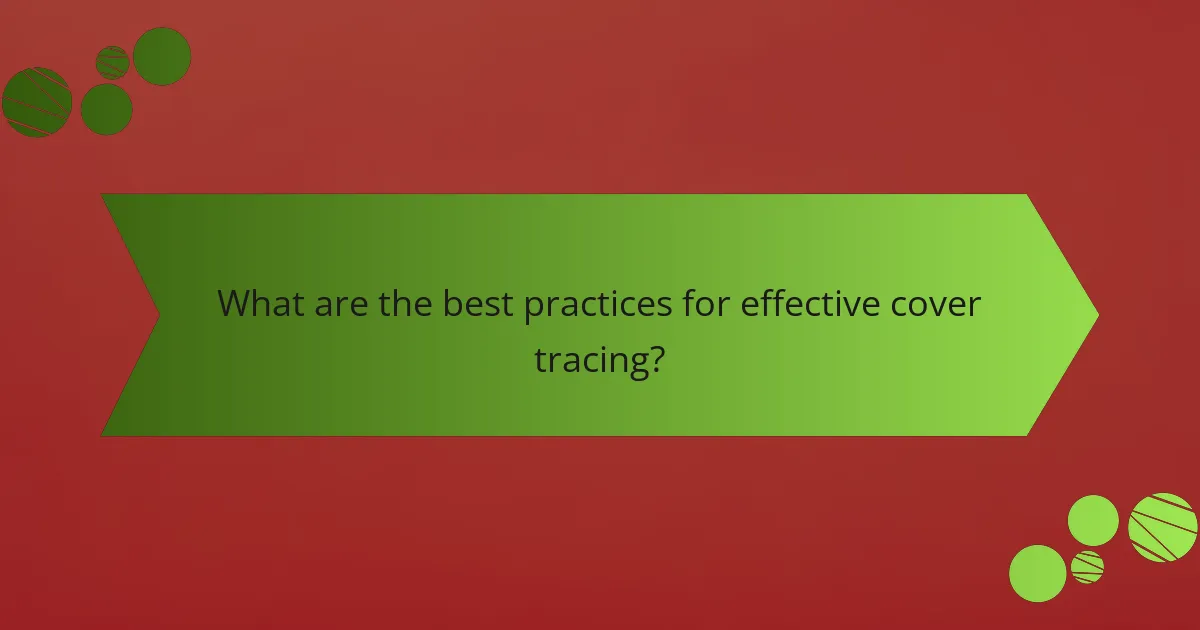
What are the best practices for effective cover tracing?
Effective cover tracing requires attention to detail and the use of appropriate tools and techniques. By following best practices, you can enhance accuracy and efficiency in your tracing projects.
Use high-resolution images
High-resolution images are crucial for effective cover tracing as they provide the necessary detail to capture intricate designs and elements. Aim for images with at least 300 DPI (dots per inch) to ensure clarity and precision in your work.
When selecting images, consider formats like TIFF or PNG, which maintain quality better than JPEG. Using high-quality images reduces the risk of misinterpretation and enhances the overall outcome of your tracing efforts.
Maintain organized layers
Organizing layers is essential for effective cover tracing, as it allows for easier adjustments and modifications. Use a logical naming convention for each layer, such as “Background,” “Text,” and “Graphics,” to streamline your workflow.
Group related elements together and utilize color coding to differentiate layers visually. This practice not only simplifies the tracing process but also helps in quickly identifying and correcting any issues that may arise.
Regularly save progress
Regularly saving your progress is a vital practice in cover tracing to prevent data loss and ensure continuity. Set a timer to remind yourself to save every 10-15 minutes, especially during complex tasks.
Consider using version control to keep track of changes over time. This way, you can revert to previous versions if needed, minimizing the risk of losing valuable work due to unexpected software crashes or errors.
